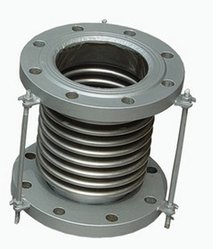globe valve 150
Understanding Globe Valves The 150 Class Standard
Globe valves are an essential component in many industrial applications, serving to regulate fluid flow with a design that offers precise control. Among the various standards and classifications of globe valves, the 150 class standard is particularly noteworthy. This article will explore the characteristics, applications, materials, and installation considerations of 150 class globe valves, providing a comprehensive overview for engineers, designers, and all professionals working in fluid control systems.
What is a Globe Valve?
A globe valve is a type of valve that utilizes a spherical body to regulate fluid flow. The design features a movable disk-type element and a stationary ring seat. As the disk is raised and lowered, it either opens or closes the passage, allowing for the regulation of fluid flow. Unlike gate valves, globe valves are excellent for throttling, making them ideal for applications where flow must be finely controlled.
The 150 Class Standard
The 150 class designation refers to the pressure and temperature ratings of a valve. Specifically, it indicates that the valve can operate safely at a maximum pressure of 150 pounds per square inch (psi) and is suitable for temperatures ranging from -20°F to 366°F. This versatility makes 150 class globe valves particularly popular for various industrial applications.
Applications of 150 Class Globe Valves
150 class globe valves are widely used across multiple industries, including oil and gas, water treatment, chemical processing, and HVAC systems. Their ability to provide reliable flow regulation makes them indispensable in systems requiring precise control, such as in cooling water systems, steam lines, and fuel supply lines. Additionally, they are often found in applications where pressure drop is a critical consideration, allowing for smooth flow adjustment without causing significant energy loss.
Materials Used in Globe Valves
The choice of materials for globe valves is crucial, as they must withstand various environmental conditions and types of fluids. Common materials used in the construction of 150 class globe valves include
globe valve 150

1. Cast Iron Often used for water and sewage applications due to its durability and cost-effectiveness. 2. Brass Suitable for use in plumbing and heating applications, especially for smaller sizes. 3. Stainless Steel Ideal for corrosive environments, stainless steel globe valves offer excellent resistance to oxidation and rust. 4. Carbon Steel Frequently used in the oil and gas industry due to its strength and ability to withstand high pressures.
The choice of material significantly affects the valve's performance, longevity, and suitability for specific applications.
Installation and Maintenance Considerations
When installing 150 class globe valves, it's essential to follow proper guidelines to ensure optimal performance. Here are some key considerations
1. Orientation Globe valves are primarily designed for vertical installation to ensure proper flow direction. If horizontal installation is necessary, ensure that the valve allows for proper drainage to prevent fluid buildup.
2. Pipe Support Valves should be adequately supported to prevent undue stress on the piping. This can be achieved through brackets, hangers, or supports, depending on the installation environment.
3. Regular Maintenance To maintain efficiency, globe valves should be inspected and maintained regularly. This involves checking for leaks, ensuring the actuator functions correctly, and replacing any worn or damaged components.
4. Sealing Ensure that all seals are intact and functioning. Over time, seals can wear and lead to leaks, which can significantly affect system performance.
Conclusion
150 class globe valves are vital components in many industrial applications, providing precise flow regulation and operational reliability. Understanding their design, applications, and maintenance requirements enables engineers and operators to ensure optimal functionality and longevity. Whether in a water treatment facility or a high-pressure steam system, the effective use of 150 class globe valves enhances system efficiency, safety, and performance. As industries evolve, the role of globe valves, particularly those meeting the 150 class standard, will continue to be crucial in managing fluid control systems effectively.
-
The Key to Fluid Control: Exploring the Advantages of Ball Valves in Industrial SystemsNewsJul.09,2025
-
The Versatile World of 1, 2, and 3 Piece Ball ValvesNewsJul.09,2025
-
Stainless Steel Ball Valves: The Ideal Choice for Efficient Flow ControlNewsJul.09,2025
-
Optimizing Fluid Control with Ball Float ValvesNewsJul.09,2025
-
Manual Gate Valves: Essential for Control and EfficiencyNewsJul.09,2025
-
Everything You Need to Know About Butterfly ValvesNewsJul.09,2025
-
The Versatility of Wafer Type Butterfly ValvesNewsJul.08,2025




